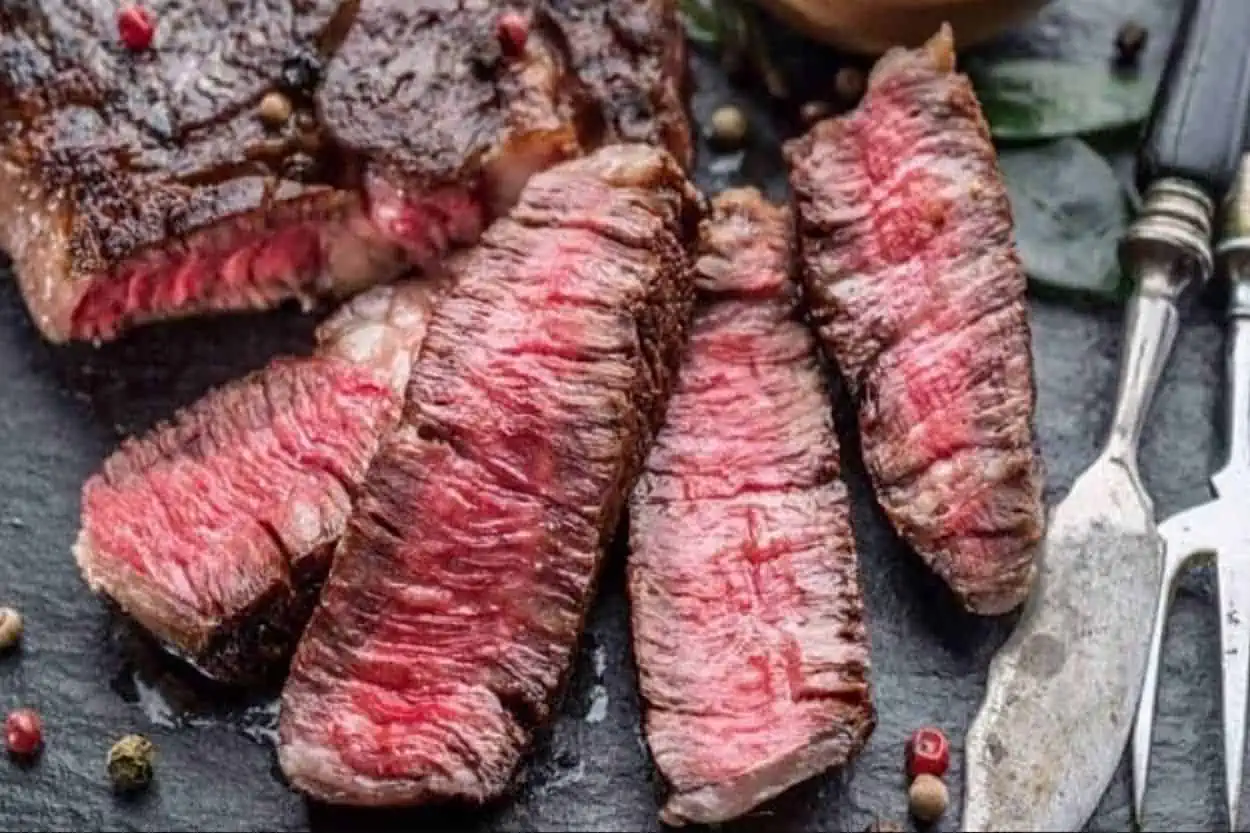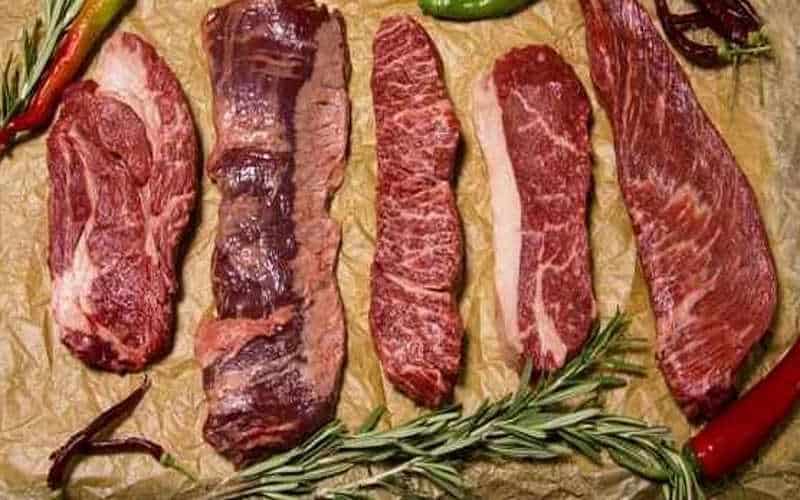What elevates a simple meal to an unforgettable experience, captivating taste buds and igniting a passion for culinary excellence? Rare ribeye temp, a cut of steak revered by gourmands globally, stands as the definitive answer. This isn't merely about food; it's about an exploration into the very heart of flavor, texture, and the art of fine dining.
Rare ribeye temp, a testament to both the skilled hands of the butcher and the artistry of the chef, is more than just a meal; its a statement. Sourced from the rib section of the cow, this cut boasts an unparalleled balance of tenderness and flavor, making it a favorite of both professional chefs and enthusiastic home cooks. This guide serves as a deep dive into the world of rare ribeye temp, examining its origins, ideal preparation techniques, and providing essential tips for consistently achieving steak perfection.
As you begin your culinary journey into the heart of the rare ribeye temp, you'll uncover a world brimming with potential. From the precise art of temperature control to the delightful dance of complementary flavors, this exploration offers the insights and techniques necessary to elevate your steak mastery. Let's step into the realm of rare ribeye temp.
- Costco Membership Benefits Is It Worth The Cost
- Zuckerberg Parker The Untold Story Of Facebooks Early Days
- Introduction to Rare Ribeye Temp
- The Origin and Characteristics of Ribeye Cut
- Ideal Cooking Temperature for Rare Ribeye
- Preparation Techniques for Perfect Rare Ribeye
- Understanding the Flavor Profile of Ribeye Temp
- Health and Nutritional Benefits of Ribeye Steak
- Best Food Pairings for Rare Ribeye Temp
- Tips for Achieving the Perfect Steak
- Frequently Asked Questions about Rare Ribeye Temp
- Conclusion and Final Thoughts
Introduction to Rare Ribeye Temp
Why Rare Ribeye Temp is Special
Rare ribeye temp distinguishes itself from other cuts of steak through its extraordinary characteristics. Its rich marbling, the intricate network of fat dispersed throughout the meat, is the key to its unrivaled flavor and succulent juiciness. This cut is widely regarded as a paragon of indulgence, delivering a dining experience that is both luxurious and deeply satisfying.
One of the critical factors in the rare ribeye's unique appeal is its remarkable versatility. Whether griddled, pan-seared, or roasted, this cut of meat elegantly adapts to a variety of cooking methods, allowing chefs and home cooks alike to experiment with an array of flavors and techniques. Its impressive ability to retain moisture throughout the cooking process guarantees that each bite is as tender and juicy as the last.
The Origin and Characteristics of Ribeye Cut
Where Does Ribeye Come From?
The ribeye cut hails from the rib section of the cow, specifically from ribs six through twelve. This part of the animal undergoes less physical strain than other areas, contributing to the cut's natural tenderness. The ribeye's robust flavor is amplified by its significant fat content, which melts during cooking, infusing the meat with additional juiciness and flavor.
- Executive Suites Downtown Seattle Your Ultimate Guide
- Sydney Sweeney From Handmaids Tale To Hollywood Icon
Key characteristics of ribeye include:
- High marbling, which contributes to its rich flavor
- Tender texture that makes it easy to chew
- Distinctive beefy taste that stands out among other cuts
Ideal Cooking Temperature for Rare Ribeye
Understanding Doneness Levels
Achieving rare ribeye temp perfection requires a keen understanding of the ideal internal temperature needed to reach your preferred level of doneness. For a rare ribeye, the target internal temperature should be between 120F and 125F (49C to 52C). This ensures that the meat remains delightfully juicy while the outside develops a flavorful crust.
The use of a meat thermometer is absolutely crucial in attaining perfect doneness. Insert the thermometer into the thickest part of the steak, avoiding bone and excessive fat to ensure an accurate reading. This method eliminates guesswork and provides consistently reliable results.
Preparation Techniques for Perfect Rare Ribeye
Seasoning and Marinades
Proper seasoning is of utmost importance to highlight the inherent flavors of rare ribeye temp. A simple yet effective blend of salt, freshly ground black pepper, and garlic powder can do wonders, allowing the beef's natural qualities to shine. Alternatively, consider experimenting with marinades that include ingredients such as soy sauce, Worcestershire sauce, and herbs, to add depth and complexity to the flavor profile.
Allowing the steak to rest at room temperature for about 30 minutes prior to cooking is also essential for ensuring even cooking. This crucial step lets the meat reach a uniform temperature, which prevents the exterior from overcooking while the interior stays undercooked.
Understanding the Flavor Profile of Ribeye Temp
What Makes Ribeye Temp So Flavorful?
The flavor profile of rare ribeye temp is defined by its robust, beefy essence, complemented by the richness of its marbling. As the fat renders during cooking, it bastes the meat from the inside, enhancing its juiciness and adding layers of nuanced flavor. This cut is also subtly sweet and nutty, making it a true favorite among steak enthusiasts.
Enhancing the dining experience can be achieved by pairing rare ribeye temp with complementary flavors. Consider serving it with creamy garlic mashed potatoes, roasted vegetables, or a rich red wine reduction sauce to further enrich its already remarkable natural flavors.
Health and Nutritional Benefits of Ribeye Steak
Nutritional Value of Ribeye Temp
Despite its rich taste, ribeye temp boasts several nutritional benefits. It's an outstanding source of high-quality protein, which is indispensable for muscle repair and growth. Ribeye also contains vital nutrients such as iron, zinc, and B vitamins, all of which contribute to supporting overall health and well-being.
While ribeye temp has a higher fat content compared to other cuts, the majority of the fat is monounsaturated, which can help to improve cholesterol levels when consumed in moderation. A balanced diet, incorporating various protein sources, is key.
Best Food Pairings for Rare Ribeye Temp
Complementary Side Dishes
Pairing rare ribeye temp with the appropriate side dishes is vital to enhance the overall dining experience. Popular options include:
- Mashed potatoes with garlic and cream
- Grilled asparagus or other seasonal vegetables
- Creamed spinach for added richness
- Roasted root vegetables for a hearty accompaniment
For beverages, pairing rare ribeye temp with a full-bodied red wine, like Cabernet Sauvignon or Malbec, creates a harmonious balance of flavors. Alternatively, a craft beer with a malty profile can also beautifully complement the steak's robust taste.
Tips for Achieving the Perfect Steak
Expert Advice for Cooking Rare Ribeye Temp
To achieve the perfect rare ribeye temp, consider these essential tips:
- Use high heat to sear the steak and develop a flavorful crust.
- Allow the steak to rest for a few minutes after cooking to allow the juices to redistribute.
- Avoid overcrowding the pan or grill, as this can lead to uneven cooking.
- Experiment with different seasoning blends to discover your preferred flavor profile.
Mastering the art of cooking rare ribeye temp is a process that requires both practice and a keen attention to detail. By following these tips, you can consistently achieve delicious results that will impress even the most discerning palates.
Frequently Asked Questions about Rare Ribeye Temp
Common Queries Answered
Q: How long should I cook rare ribeye temp?
A: Cooking time depends on the thickness of the steak and your preferred cooking method. For a 1-inch thick ribeye, cook for about 3-4 minutes per side over high heat for rare doneness.
Q: Can I cook rare ribeye temp in the oven?
A: Yes, you can finish cooking ribeye temp in the oven after searing it on the stovetop. Preheat the oven to 400F (200C) and bake for a few minutes until the desired internal temperature is reached.
Q: Is ribeye temp suitable for grilling?
A: Absolutely! Grilling is an excellent method for cooking ribeye temp, as the high heat helps develop a flavorful crust while keeping the interior juicy.
Data sources: U.S. Department of Agriculture, National Cattlemen's Beef Association, and culinary experts from renowned institutions.

